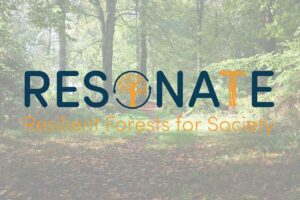Using Green Infrastructure to Manage Urban Flooding and Stormwater Run-off
 With both urban populations and instances of flooding and stormwater on the rise, urban greening presents a viable alternative to engineered drainage systems, with numerous other benefits. Steve Chatwin-Grindey, General Manager at DeepRoot Urban Solutions Ltd, looks at the challenges and potential solutions for employing green infrastructure.
With both urban populations and instances of flooding and stormwater on the rise, urban greening presents a viable alternative to engineered drainage systems, with numerous other benefits. Steve Chatwin-Grindey, General Manager at DeepRoot Urban Solutions Ltd, looks at the challenges and potential solutions for employing green infrastructure.
Half of the world’s population is living in cities and this is set to rise to 70% in 2050, urbanisation is clearly on the rise and cities are becoming denser and denser. This is having an effect not only on how we plan buildings and roads but also how we integrate and care for urban nature. We need to look at the effects this squeeze is having on planning green infrastructure in to our cities.
We know stormwater in these environments is regularly drained through expensive, and often disruptive, engineered collection systems. However, experience shows that this has proved an often unsuccessful, short term fix. Every project undertaken in an urban environment should also be making proper use of natural resources and systems capable of performing the same functions to help take the strain.
What is Green Infrastructure?
So what other systems should we be using and how can they be implemented? Long-term green infrastructure is certainly one, central to which are large healthy trees.
Green infrastructure uses vegetation, soils, and natural processes to manage water where it falls in order to create healthier and better performing urban environments. By keeping stormwater where it falls, it can prevent flooding and the spread of pollution through stormwater run-off, which can be a major cause of damage and water pollution in urban areas.
Trees and soils are essential to successful green infrastructure and have potential to provide significant stormwater benefits – they can be integrated into even the densest urban areas – and some cities have tree requirement ordinances so they’re not only desired but also mandatory.
Research shows that large, mature trees are one of the best solutions for sustainable stormwater management as they absorb run-off and prevent it flowing into gutters, pipes and sewers, which can reach capacity quickly. They also improve water quality, of particular value in urban settings, and some can absorb pollutants too.
Foundations for Success
The bigger the trees, the greater their capacity to perform these functions. The challenge is providing the right conditions for them to grow. The evolution of development and construction processes has created a number of issues for itself, not least increasingly compacting soils to create a stable foundation. While this makes perfect sense for buildings, it creates a very unfriendly environment for tree roots. The success of a tree is fundamentally tied to the volume and quality of the soil it grows in. This is where we need to look to suspended pavements and other devices to provide the conditions for tree growth alongside new development.
Suspended pavements offer a low-impact design solution for the long term co-existence of trees in paved areas like streets, car parks, roofs and promenades. They are essentially soil-delivery systems, creating a rooting area composed of lightly compacted, high-quality soils for tree roots in cities and other heavily paved environments. In addition to aiding urban tree growth, the soil can also be used for on-site stormwater management, maintaining pre-development hydrology and minimising flooding.
A Cross-sector Approach
It’s clear that rainwater management systems need to be incorporated into green infrastructure. And, there is evidence of local authorities formulating specific frameworks to encourage green infrastructure, for example, in 2013 Leeds City Council launched its long term vision to create green corridors. However, with most cases the problem lies in the implementation of such frameworks which is often down to funding cuts.
A holistic approach is needed that encourages planners, green space managers, landscape designers and others to properly consider the role of green spaces and how they can impact on stormwater management in urban settings as well as creating a healthier environment. We also need to enforce the selection of quality soil, devices and solutions that enable our trees to grow and reach their potential, providing the important ecological benefits that make a significant difference to the quality of our environment.
Steve Chatwin-Grindey has worked on green infrastructure projects utilising the Silva Cell across the UK, including at the Royal Air Force Bomber Command Memorial (London), Dortmund Square (Leeds) and council streetscape renovations countrywide.





